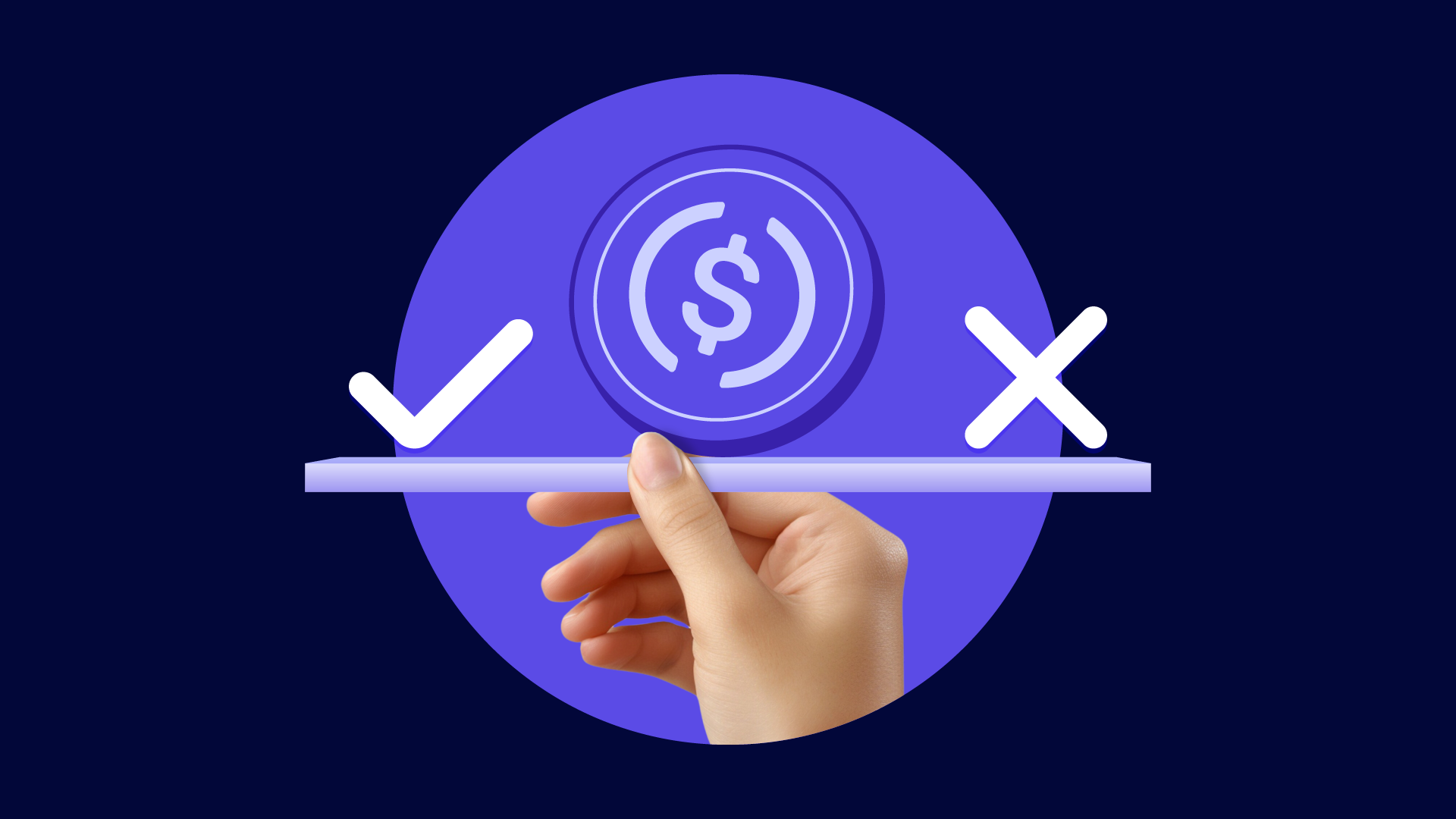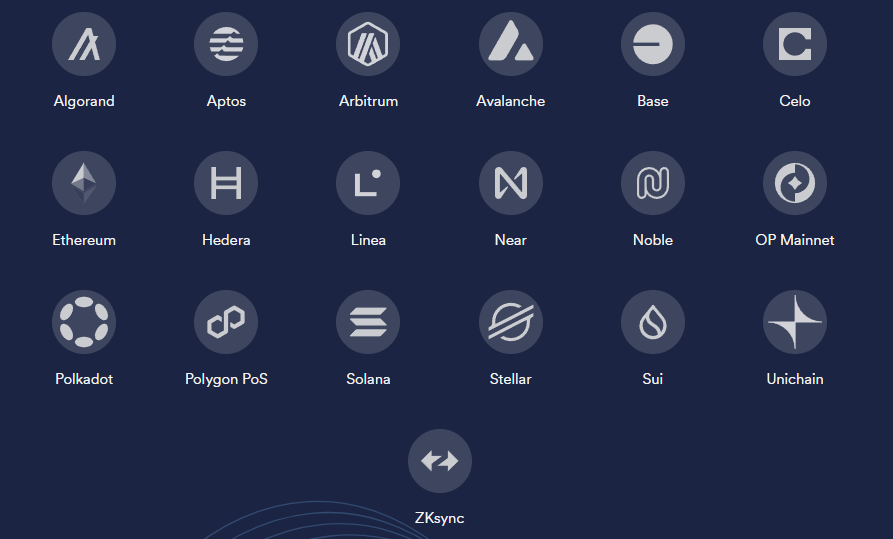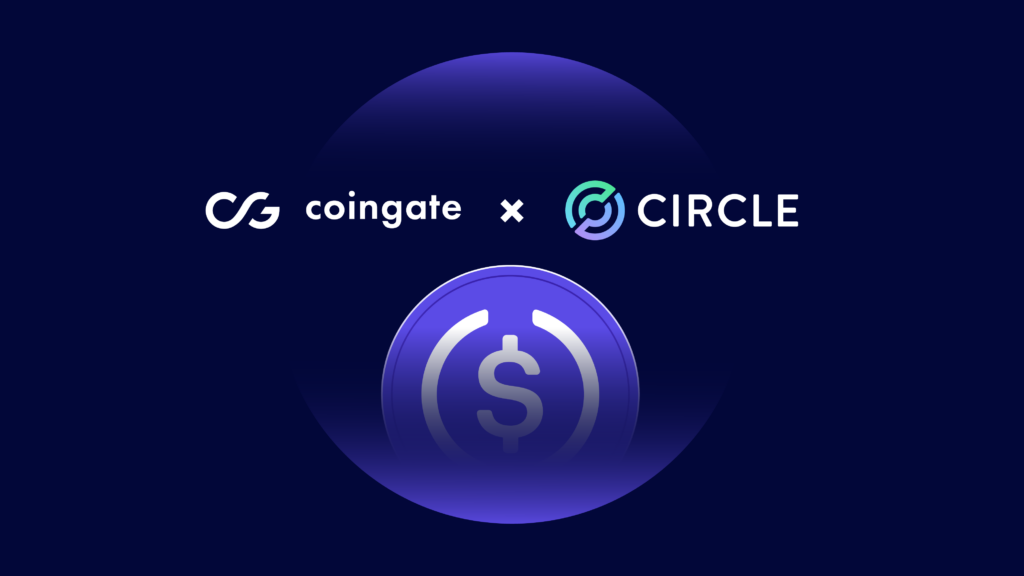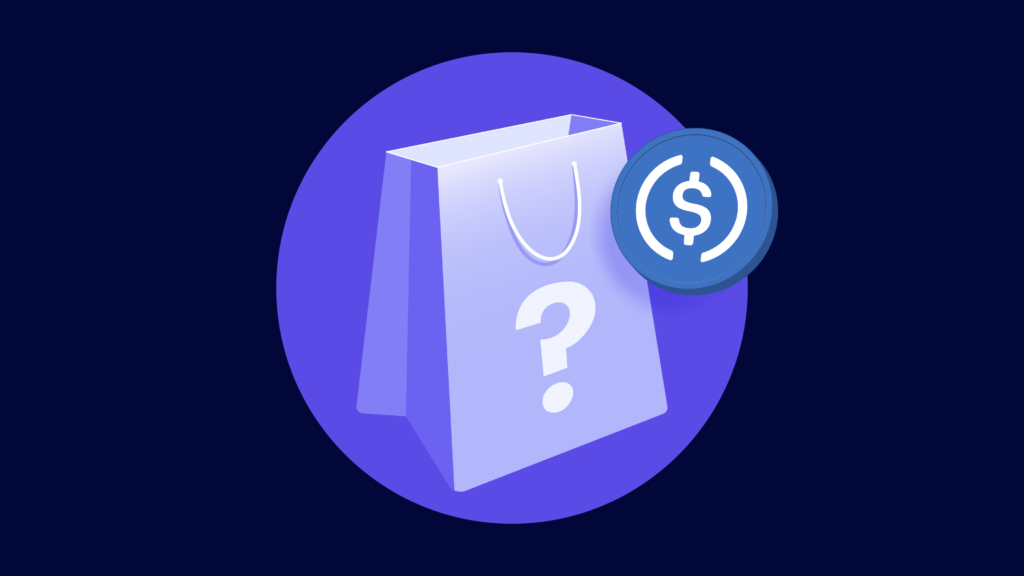
What is USDC? A Complete USD Coin Guide

What is USDC in Crypto? – USDC is a stablecoin pegged to the US dollar, operating on multiple blockchain networks to provide a secure, reliable digital asset helping quickly access liquidity for transactions and transfers.
Issued by Circle in collaboration with Coinbase through the Centre Consortium, which oversees the development and governance of the token, USDC has become a trusted asset in the cryptocurrency ecosystem.
But what is USDC currency for the average user? In simple terms, it is just a digital version of the U.S. dollar that stays stable in value. While having such an asset may sound underwhelming, it lets people send money internationally, pay for products, or store value without worrying about the wild price swings that make other cryptocurrencies unappealing, while still working smoothly for transactions across many platforms.
Take advantage of USDC payments in business today! All you need is a CoinGate account.
Launched in September 2018, USDC became the second-largest stablecoin by market capitalization, with a circulation of $60 billion as of April of 2025. As more users continue to learn what USD Coin is, the benefits speak for themselves. Its growing adoption gives us a valuable and modernized U.S. dollar substitute with instant worldwide payments and powerful automation features that traditional currencies cannot deliver.
With strong institutional backing and a focus on regulatory compliance, USDC continues to play a pivotal role in bridging traditional finance with blockchain technology. Let’s get straight to the point: what is USDC crypto and why having such an asset in the industry is so convenient?
What is USD Coin: Quick Answer
USD Coin (USDC) is a stablecoin pegged 1:1 to the U.S. dollar, issued by Circle and Coinbase through the Centre Consortium.
Thanks to its backing by cash and short-term U.S. government bonds, we can define USDC as a stable, secure, and transparent digital currency with fast and low-cost transactions.
Since 2018, it has been widely used in trading, DeFi applications, and cross-border transactions, while being a stabilizing force in a volatile crypto environment.
Key Takeaways: What is the point of USDC
For your convenience, here’s an overview of key points that boil down what is USDC coin all about:
- A reliable stablecoin. The USDC’s 1:1 U.S. dollar peg makes it a great asset for storing value in crypto without worrying about its loss of value.
- Joint Development. Created by Circle and Coinbase via the Centre Consortium, which ensures that the stablecoin remains secure, compliant, and widely adopted.
- Fully Backed. USDC is supported by cash and short-term U.S. Treasuries, which provides assurance that their funds are backed by highly liquid and secure assets.
- Regulated and Transparent. Regular attestations from top accounting firms like Deloitte provide a guarantee that the stablecoin maintains its full and transparent backing.
- Versatile Use Cases. As a digital dollar equivalent, USDC provides a stable currency for trading, DeFi, payments, and remittances while maintaining consistent value.
- Multi-Chain Support. USDC is Available on Ethereum, Solana, Polygon, and Algorand, while access to multiple blockchains gives users the choice to use the best option to fit their needs.
- Regulatory Compliance. By following U.S. regulatory standards, including licensing and financial audits, USDC regulation gives more confidence from outside parties compared to stablecoins like USDT.
- Centralized Control. With centralized management by Circle and Coinbase, USDC can respond faster to risk factors and regulatory changes than its decentralized alternatives like DAI.
Who Created USDC?
Who is behind usd coin?
Circle, the fintech company behind USDC, was founded by Jeremy Allaire and Sean Neville. The idea blossomed from the shared frustration between partners: how do we get a stable, properly regulated currency that uses Blockchain technology? Other cryptos were never suited for the job, as their value is solely dependent on market supply and demand, making them too volatile.
What’s the point of USDC?
To get the best of both worlds, the new cryptocurrency had to be backed by secure assets, whose liquidity kept the price stable. As a bridge between traditional finance and blockchain technology, USDC was created to target the demand for a stablecoin with stricter regulatory compliance.
How USDC was created?
In order to create a fully backed and verifiable alternative to Tether (USDT), which faced scrutiny over its reserves and transparency, Circle worked with CoinBase to launch the token in 2018. As a trusted and compliant stablecoin, USDC bursts into the market by providing more assurance and joint regulation to guarantee its 1:1 peg to the U.S. dollar.
With assistance from CoinBase to highlight these benefits for wider adoption, Circle managed to ensure the growth of USDC by presenting the stablecoin as a trustworthy and transparent digital currency for global payments, trading, and decentralized finance (DeFi).
How Does USD Coin (USDC) Work?
To understand how USDC works, let’s take a look at how coins are issued. USDC enters circulation through Circle Mint, where users deposit U.S. dollars and receive newly minted tokens on supported blockchains via smart contracts.
What network is USDC on?
While USDC does not have its own blockchain, its tokens are constantly issued across multiple networks, a credit to its flexibility. So, if you’re wondering what blockchain is USDC on, here are several key networks where USDC operates:

- Ethereum (ERC-20). The most widespread adoption with consistent availability and acceptance on most cryptocurrency exchanges. Compatible with thousands of Ethereum-based financial applications for DeFi integration, but some users avoid it due to high gas fees.
- Polygon (MATIC). Polygon offers low fees for cost-effective transactions but maintains lower liquidity levels compared to Ethereum’s primary chain. Polygon implements Ethereum’s Virtual Machine (EVM) and Web3 APIs for smart contract compatibility, allowing users to access familiar Ethereum-based tools with significantly reduced gas cost.
- Algorand (ASA). Algorand offers near-instant transaction finality with minimal fees—ideal for cost-conscious users who prioritize speed—though it has fewer ecosystem integrations compared to other blockchain versions. This limits how you can use your USDC, as its limited access to platforms gives you fewer options for where to use the token.
- Avalanche (C-Chain). Avalanche is another option with a main focus on speed and efficiency or users seeking fast transactions. However, its smaller user base results in fewer available services compared to other networks on this list.
- Stellar (XLM). Stellar specializes in international transfers, by eliminating intermediaries for cross-border payments while maintaining surprisingly low costs. Still, as more of a specialist chain, it lacks DeFi compatibility and smart contract functionality compared to other chains.
- Solana (SPL). Solana’s SPL protocol delivers exceptional transaction processing capabilities with minimal costs.
Instead of worrying about what chain the token is on, you have full control of dispersing your USDC cryptocurrency thanks to its multi-chain support. Choose the blockchain that best fits your needs, whether for faster transactions, lower fees, or better integration with specific applications. These differences allow users to choose the most suitable USDC blockchain for their use case.
Also, let’s not forget what USDC is backed by. The blockchain you choose for USDC affects transaction speed, fees, and available financial applications—not the token’s 1:1 peg. Independent accounting firms conduct monthly attestations to verify that USDC’s reserves match its total supply, which results in a transparent and reliable stablecoin.
What is USDC Backed by?
If you’re asking yourself ‘is USDC backed by USD?’ and your answer is yes – you’re absolutely correct. If you’re asking if USDC the same as USD – not exactly.
USDC is fully backed by cash and short-term U.S. government bonds. When combined with regulatory compliance and joint oversight thanks to the Centre Consortium, users can trust its full backing and stable 1:1 peg to the U.S. dollar. Every USDC token is backed by either actual U.S. dollars in regulated bank accounts or highly secure, short-term U.S. Treasury bonds that can be quickly converted to cash.
Its reserves include cash held in regulated U.S. bank accounts and U.S. Treasury bonds with maturities under three months, making it one of the most transparent stablecoins in the market. USDC undergoes monthly audits by top accounting firms, to address the main concern of users – do the token’s reserves match its circulating supply? These reports are publicly available, and each user can seek out this information to independently confirm the USDC’s full backing.
USDC maintains its 1:1 peg through a simple mint-and-burn process. When you deposit dollars, Circle creates new USDC tokens for you to use. Once you want your dollars back, Circle destroys those tokens and returns your USD.
What Makes USDC Unique to Other Stablecoins
Stablecoins have many benefits, but they have their distinct differences. USDC’s centralized structure creates a double layer of compliance through Circle and Coinbase, making its backing more trustworthy than other alternatives on the market.
Also, USDC only backs its tokens with cash and safe government securities. Unlike Tether (USDT), USDC does not hold commercial paper or other high-risk assets, further showcasing its unyielding dedication to remain the most stable option in the stablecoin market.
USDC’s Regulatory Compliance & Transparency
Circle prides itself on delivering a highly compliant stablecoin, which sets USDC apart from other competitors in the market.
Compared to USDT, which has faced scrutiny over its reserves and legal status, USDC ensures regulatory compliance through monthly attestations, FinCEN (Financial Crimes Enforcement Network) registration, partnerships with FDIC-insured banks, and comprehensive anti-money laundering policies. On top of that, it adheres to Know Your Customer (KYC) regulations and conducts regular audits to verify its full backing and legitimacy.
Circle also has become the first global stablecoin issuer to achieve compliance with the European Union’s Markets in Crypto-Assets (MiCA) regulatory framework. That’s why our payment gateway joined the Circle’s Alliance Program to further expand our cooperation.

Regulatory oversight is crucial for institutional adoption, as businesses need tokens that meet legal and compliance standards. Strict rules and safe backing reduce risks that could destabilize the currency. Poorly regulated stablecoins raise transparency concerns, affecting other tokens and creating market-wide volatility, where sudden price changes and liquidity problems force traders to quickly sell their holdings.
USDC’s legal framework is more transparent than USDT’s, which is a valuable vote of confidence that tokens will not lose too much value, even during market turbulence when other stablecoins might falter. Because USDC follows strict U.S. financial rules, many businesses and institutions prefer it for important transactions.
What can you do with USDC?
There are many USDC use cases. By maintaining a stable value and providing liquidity and security in quick digital transactions, USDC serves as a reliable medium for both the exchange and your value storage. With stablecoins like USDC, we can finally enjoy the speed and convenience of cryptocurrency transactions without worrying about the unpredictable volatility, which will cause you to lose money when sending payments or holding digital assets.,
The stability of the US dollar with the speed and programmability of blockchain technology allows us to send money instantly across borders, automate payments through smart contracts, and integrate with digital wallets and payment systems. The growing number of companies that accept USDC payments just makes sense – the token’s convenience and regulatory compliance make it a necessary asset for modern business interactions.
However, broad coverage of USDC’s beneficial features does not paint the full picture of its usefulness. Let’s find out what is USDC used for.
USDC for Trading
A common strategy in speculative trading uses USDC to exit volatile crypto assets and change them into a stablecoin as quickly as possible. Converting your crypto profits into USDC happens instantly on most exchanges, which is far better than waiting hours or even days to get your conversion to U.S. dollars—during which time market movements could cause you to lose significant value.
Many crypto exchanges list USDC trading pairs (e.g., BTC/USDC, ETH/USDC) to facilitate quick trades. Most traders report that quick conversion from other cryptos is exactly what is USDC used for, giving them more control over the entire crypto trading process.
What is USDC Payment & Remittances

USDC tokens are great for crypto payments and cross-border transactions, offering faster and cheaper international remittances compared to traditional bank transfers. While SWIFT transactions take days, USDC remittances settle in minutes, reducing costs and waiting time – resources worth saving.
Taking crypto payments with USDC is gaining popularity. In 2024 particularly USDC payments experienced an 86.9% surge in usage, spurred by integration of Solana network into our payment gateway in May of 2024.
More and more merchants set up their systems to accept USDC payments to enjoy the benefits of instant, borderless transactions and avoid the annoying chargebacks or high processing fees. Financial inclusion is another perk, as this payment method help unbanked people in areas with limited banking infrastructure.
You, too, can easily ake crypto payments with USDC stablecoin on multiple blockchains by employing a cryptocurrency payment processor, such as CoinGate. The first step is to create an account.
If that wasn’t enough, USDC supports programmable payments, making it useful for automated payroll, smart contract transactions, and recurring payments, making mundane tasks far more efficient so your brain power can be focused on more complex tasks. There is no need to burden yourself with repetitive financial processes, allowing users to concentrate on strategic decision-making.
Limitations of USDC
While USDC is widely trusted and transparent, it is not perfect. Here are some limitations you should be aware of:
USDC Transactions Require KYC Verification for Fiat Conversion
Unlike decentralized stablecoins (see DAI stablecoin), USDC adheres to strict regulatory compliance, which might not be ideal for all users.
USDC owners must verify their identity with a cryptocurrency exchange, such as Coinbase or Binance, or other platforms, such as CoinGate that offers currency conversion options, to convert USDC into fiat currency and withdraw to the bank account.
If you are one of the users who cherish privacy and anonymity as main priorities in their financial transactions, using the token might not be for you.
Centralized Control by Circle & Coinbase
USDC is centralized and fully controlled by Circle and Coinbase via the Centre Consortium. Circle can freeze or blacklist addresses suspected of illicit activity—a limitation shared with traditional banking systems.
Transaction Fees Vary by Blockchain
Since USDC does not have its own blockchain, its functionality, including transaction fees, can vary depending on your choice of blockchain network. For example, Ethereum (ERC-20) USDC transactions are known to have high gas fees, which discourages some users from choosing it.
Meanwhile, although alternative blockchains may charge lower transaction fees, they might not have the same level of adoption or support for decentralized applications, which could be the primary reason some users choose to use them.
Alternative blockchains like Solana, Polygon, and Algorand offer lower fees, but adoption varies depending on the use case. If we compare the popular stablecoins, USDT vs. USDC vs. DAI, the USD Coin alternatives can be more commonly used on blockchains that best match your desired features and applications.
Security & Storage

USD Coin can be stored in a hot or cold wallet. However, the right choice of storage is heavily influenced by how you intend to use it. So what is the difference between hot and cold wallet? Let’s break it down.
USDC Hot Wallets (Convenience & Accessibility)
Hot wallets like MetaMask, Trust Wallet, and Coinbase Wallet should be your go-to option for frequent transactions & payments. As users set up the storage, they import or generate a private key or seed phrase, which unlocks full access to manage and transfer the USDC stored in the wallet.
Having a single key that unlocks access to all your USDC holdings is inherently risky. This puts a target on the back of Hot wallet owners, putting them at risk of hacks and phishing attacks. If the key is stolen, funds can be lost instantly.
For instance, if you keep $5,000 USDC in your MetaMask wallet for easy access, anyone who gets hold of your private key can extract all the funds without needing additional authentication.
USDC Cold Storage (Maximum Security)
Cold wallets are more secure because their private keys are stored offline, on a physical device. Combined with are ideal for long-term holding and large amounts of USDC.
Hardware wallets like Ledger & Trezor provide offline security, and a lack of connection to the internet negates the risk of hacking attempts.
Users with the best cold wallets also benefit from extra security measures: sophisticated PIN protection and physical tamper evidence that trigger an automated security response.
However, if private keys are lost, you may lose your funds forever, so making sure to create a secure backup is crucial. For instance, a long-term investor might store $50,000 USDC in a Ledger Nano X to ensure maximum security, but losing the key will destroy the accumulated funds.
I’m Interested in What USDC Payments Can Do for My Business. Where Do I Start?
We can guide you through each step of the process and get you started in no time. Sign up today to implement the benefits of USDC stablecoin payments into your platform!
Still Need More Info? USDC FAQs
Who Issues USDC?
USDC is issued by Circle in partnership with Coinbase through the Centre Consortium. It is designed to be a transparent and regulated stablecoin, ensuring full backing by cash and U.S. Treasuries.
Can USDC be Used for Everyday Transactions?
Yes! Yes! What’s true about USDC is that it’s widely accepted for everyday transactions, including retail purchases, online services, and remittances. Many businesses now accept USDC payments due to its fast settlement times and low fees.
What Are the Risks Associated With Using USDC?
USDC’s primary risks include centralized control and regulatory compliance requirements. Unlike decentralized alternatives like DAI stablecoin, USDC can be frozen or blacklisted by Circle in case of suspected illegal activity.
Is USDC Backed by the Federal Reserve?
No, USDC is not backed by the Federal Reserve. It is fully backed by cash and short-term U.S. Treasuries, with regular attestations ensuring transparency.
Which Blockchain Should I Use for USDC?
The best blockchain for your USDC depends on your use cases. Ethereum (ERC-20) offers the widest compatibility with DeFi applications and exchanges, while Solana provides significantly lower fees and faster transactions.
Accept crypto with CoinGate
Accept crypto with confidence using everything you need in one platform.

